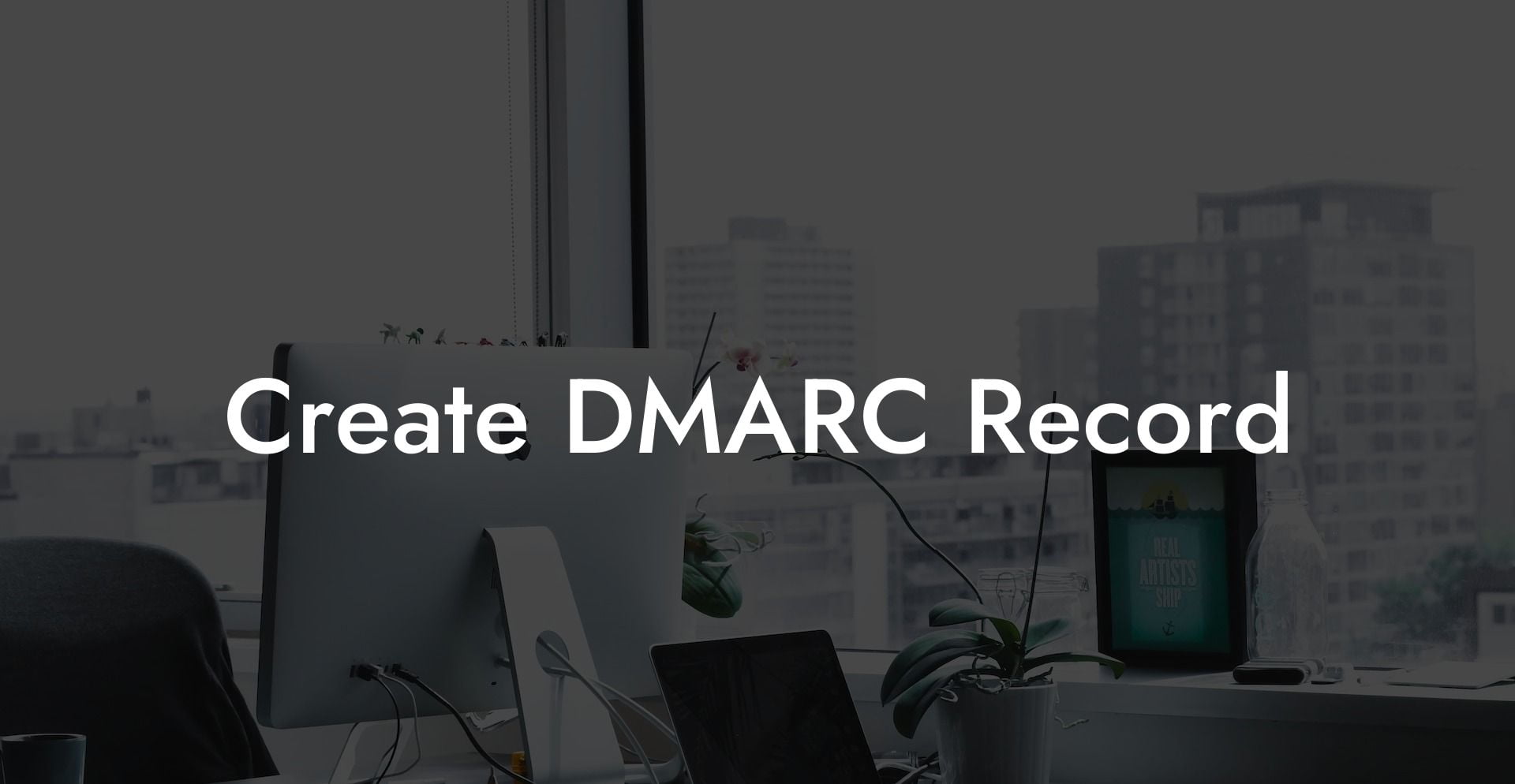In today's digital age, protecting your domain and email from phishing attacks has become a critical aspect of running a successful online business. DMARC (Domain-based Message Authentication, Reporting, and Conformance) is a key security measure used to combat phishing and spoofing attacks by validating an email's authenticity. In this all-inclusive guide, we'll dive into the importance of creating a DMARC record, walk you through the process step-by-step, and provide a real-world example to help you secure your domain and build trust among your users.
Create DMARC Record Table of Contents
Understanding DMARC
DMARC is an email security protocol that utilizes both SPF (Sender Policy Framework) and DKIM (DomainKeys Identified Mail) authentication methods to ensure senders are trustworthy and are not attempting any fraudulent activities. DMARC enables domain owners to set policies that dictate how to handle unauthenticated emails, either by blocking them, delivering them with a warning, or allowing them to pass through.
Why is DMARC important?
- Protects your brand reputation by preventing impersonation
- Cuts down on the delivery of fraudulent and malicious emails
- Increases email deliverability rates
- Provides reports to give insights into potential threats
How to Create a DMARC Record
Protect Your Data Today With a Secure Password Manager. Our Top Password Managers:
Creating a DMARC record involves generating a DNS TXT record specific to your domain, which provides instructions to receiving mail servers on how to handle unauthenticated emails.
Step 1: Determine Your DMARC Policy
Start by choosing the policy you want to enforce for unauthenticated emails:
- None: This policy only monitors and reports on email authentication but takes no action on unauthenticated messages
- Quarantine: This policy quarantines unauthenticated messages, either sending them to a spam folder or flagging them for further scrutiny
- Reject: This policy outright rejects all unauthenticated emails, blocking them from reaching the recipient
Step 2: Generate Your DMARC Record
Create a DMARC TXT record with the necessary tags and values:
- v=: This tag specifies the version of DMARC; set to "DMARC1"
- p=: This tag sets the policy you've chosen (none, quarantine, or reject)
- rua=: This tag provides the email address where you want to receive aggregate reports
- ruf=: This tag specifies the email address for receiving forensic reports, if desired
- pct=: This optional tag sets a percentage of messages to be filtered based on your policy
- adkim=: This optional tag defines the alignment mode for DKIM (strict or relaxed)
- aspf=: This optional tag sets the alignment mode for SPF (strict or relaxed)
Note: Refer to DMARC.org's detailed documentation for a comprehensive list of tags and their functions.
Step 3: Publish Your DMARC Record
Once your DMARC record is generated, add it to your domain's DNS as a TXT record with the correct subdomain (_dmarc.yourdomain.com). After this step, email receivers will begin to authenticate your messages using DMARC.
Monitoring Your DMARC Record
After setting up your DMARC record, it's important to regularly review the reports received to make adjustments to your policy and take necessary actions to protect your domain from phishing attempts.
Create DMARC Record Example:
Here's an example DMARC record:
v=DMARC1; p=quarantine; rua=mailto:reports@example.com; ruf=mailto:forensic@example.com
In this example:
- The version of DMARC used is DMARC1
- The policy is set to quarantine unauthenticated messages
- The aggregate reports will be sent to reports@example.com
- The forensic reports will be sent to forensic@example.com
Securing your domain by creating a DMARC record is not only a crucial aspect of safeguarding your brand's reputation but also a way to protect your customers and users from potential phishing attacks. We hope this comprehensive guide provides you with the tools and knowledge needed to create and monitor your DMARC record effectively. Now that you've learned how to set up DMARC, we encourage you to explore other essential cybersecurity guides available on Voice Phishing. Remember to share this valuable information with your colleagues or anyone else who might benefit from these insights!
Protect Your Data Today With a Secure Password Manager. Our Top Password Managers:















